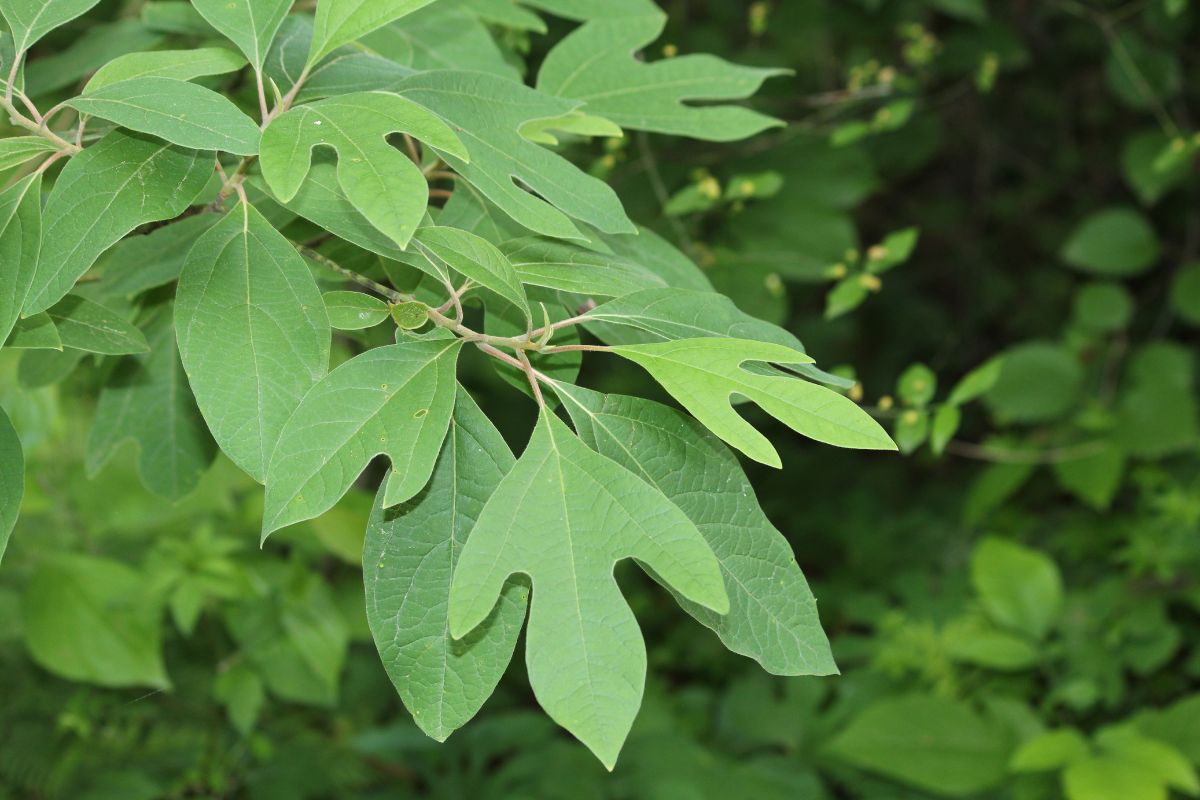File powder (pronounced fee-lay) is a greenish-brown powder made from sassafras tree leaves, commonly used in Cajun and Creole cooking. File powder is added towards the end of the cooking process and acts as a thickening agent while adding a distinctive flavor to the dish, with notes of thyme and slight bitterness.
Table of Contents
What is file powder?

File powder is a spice used in Louisiana, particularly Cajun and Creole cuisine. It comes from the dried and ground leaves of the sassafras tree.
| Origin | Was native to North America and has been used by native Americans |
| Cuisines | A popular ingredient in Cajun and Creole cooking |
| Appearance | Fine and green powder, similar to dried herbs |
| Flavor profile | Has a slightly sweet and earthy taste, with hints of anise |
Origin
Sassafras has a fascinating history and origin.
It was native to North America and has been used by native Americans for its medicinal properties and as a cooking spice. The plant was introduced to England in the late 16th century by the Choctaw Indian tribe and was highly valued for its practical and supposed medical uses.
English ships were sent to collect sassafras roots, known as the “Great Sassafras Hunts.” The plant’s oil has been used to make soap and flavor drinks. Unfortunately, people have later discovered that the compound safrole, which gives sassafras oil its taste, can cause liver cancer in rats and miscarriages in humans.
As a result, the FDA banned using safrole as an additive in the 1960s and safrole-containing tea in the 70s. Root beer still contains sassafras root, but the safrole is removed from the oil.
Cuisines
File powder is a popular ingredient in Cajun and Creole cooking. It also contains spices like allspice, coriander, and sage and can add flavor to meats, vegetables, seafood, bisques, and stews. It is also commonly used as a thickener for soups and meat dishes.
Sassafras leaves go well with salads, and the essential oil from the leaves adds flavor to beverages (after removing the toxic safrole compound). Thus, you can use it to make tea and jambalaya.
One popular file powder recipe is gumbo, a stew typically made with seafood, sausage, chicken, and vegetables such as onions, peppers, and celery.
Appearance
File powder is fine and green, similar to dried herbs. Its texture is slightly gritty.
Flavor profile
Regarding flavor profile, file powder has a slightly sweet and earthy taste, with hints of anise and a subtle aroma. It is typically added towards the end of cooking to prevent the powder from becoming bitter.
Nutritional Benefits of file powder
Gumbo file powder doesn’t contain significant amounts of major nutrients, but the sassafras leaves used to make it have around 2-3% essential oil that contains beneficial compounds.
These compounds include myrcene, which has anti-inflammatory and soothing properties, and linalool, which fights inflammation and acts as a mild sedative. Gumbo file powder also contains some dietary fiber, aiding digestive health.
You can use file powder to prevent and treat certain health conditions. For example, it could help prevent kidney stones due to its diuretic effects.
Sometimes, sassafras leaves remedy high blood pressure. Additionally, sassafras may help alleviate inflammatory conditions like arthritis and gout.
What is the difference between file powder and ground sassafras?
| Ground sassafras | Made by grinding the dried leaves of the sassafras tree, added to dishes during cooking, a subtle, earthy flavor |
| File powder | Made by grinding the dried leaves of the sassafras tree then sifting them, added toward the end of the cooking process, acts as a thickener and flavoring agent |
Ground sassafras is made by grinding the dried leaves of the sassafras tree, while file powder is made by grinding the dried leaves of the sassafras tree and then sifting them to remove any large pieces or stems.
Ground sassafras is typically added to dishes during cooking to add a subtle, earthy flavor. In comparison, file powder is a thickener and flavoring agent in gumbo recipes and other dishes.
Additionally, file powder is typically added toward the end of the cooking process, while you add ground sassafras earlier.
What is the best substitute for file powder?


While file powder is the perfect gluten-free thickening agent, you might not always have it in your pantry. The best substitutes for file powder are okra and roux:
- Fresh or frozen okra can be a thickener in gumbo and other dishes. Slice the okra and add it to the pot, allowing it to cook until it becomes tender and starts to break down. This will release a natural thickening agent to help thicken the dish.
- A roux is a mixture of flour and fat (usually butter or oil) used in thickening soups, stews, and sauces. In Creole and Cajun cooking, a dark roux serves to thicken dishes. To make a roux, melt butter in a skillet, add flour, and cook over low heat until the mixture turns dark brown.
Arrowroot powder and cornstarch can also replace file powder in some recipes.
How much is file powder worth?
The price of file powder depends on location, brand, and quantity. Generally, a small container of file powder can cost anywhere from a few dollars to around $10.

